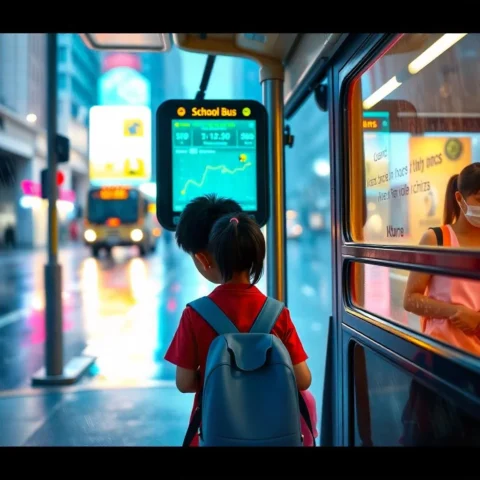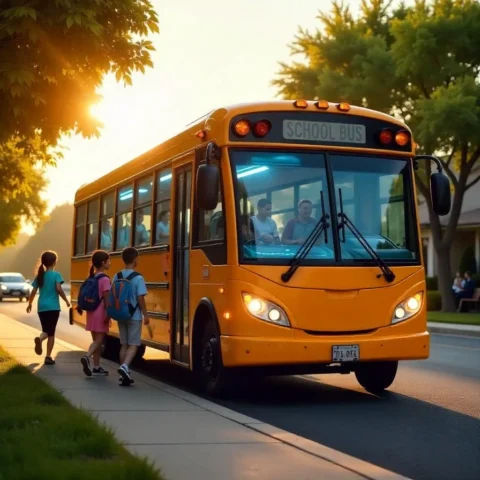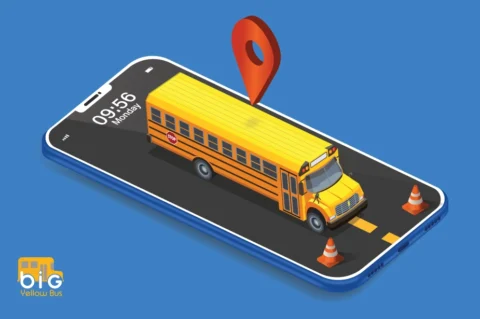When a suburban district installed its School Bus Tracking System two years ago, the administration celebrated. Parents expressed relief. But the students? They barely noticed. To them, it was just another app their parents used – something entirely disconnected from their daily lives and concerns.
That perspective changed dramatically one rainy Tuesday morning when an eighth-grader discovered something unexpected about the School Bus Tracking System that transformed how students across the district relate to their daily commute.
The Accidental Discovery
“I was running late, as usual,” the student explains with a self-deprecating smile. “Mom was already at work, and I was sure I’d missed the bus. Then I remembered she had installed the School Bus Tracking System app on my phone ‘for emergencies.’ I figured this qualified.”
What happened next surprised her. The School Bus Tracking System showed her bus was running seven minutes behind schedule due to construction – she hadn’t missed it at all. She made it to the stop with two minutes to spare.
“It sounds small, but it was kind of mind-blowing,” she says. “Suddenly, I had information that gave me control over my morning. I wasn’t just passively waiting and hoping.”
Word Spreads: The Student Network Takes Notice
The discovery spread quickly among friends, and within weeks, students across grade levels were accessing the School Bus Tracking System directly, not because adults told them to, but because they recognized its value to their independence.
A thirteen-year-old with ADHD found the School Bus Tracking System helped him manage his time better. “The notifications are like my personal assistant,” he explains. “I used to get so caught up in morning activities that I’d miss the bus at least once a week. My parents were always rescuing me. Now the app sends me alerts when the bus is five minutes away, and I haven’t missed it once this semester.”
Creating Independence, One Stop at a Time
For a seventh-grader who uses a wheelchair, the School Bus Tracking System offered unexpected dignity. “Before, my dad would wait with me at the stop for ages because we never knew exactly when the bus would arrive. It was embarrassing to have my parent hovering when other kids were by themselves.”
Now she checks the School Bus Tracking System independently and times her arrival at the stop precisely. “My dad walks me to the corner but leaves once we see on the app that the bus is approaching. It might seem small to others, but for me, it’s huge – it’s being treated like everyone else.”
Special Needs, Special Benefits
The impact has been particularly profound for students with autism spectrum disorder and sensory processing challenges. One fourteen-year-old uses the School Bus Tracking System to prepare himself mentally for the transition from home to school.
“Changes and transitions are hard for me,” he shares. “Knowing exactly when the bus will arrive helps me prepare. I can watch it move on the map and count down the stops. It reduces my anxiety because there are no surprises.”
His mother adds, “The School Bus Tracking System has become part of his morning routine. He checks it while eating breakfast, giving him a sense of security and predictability that makes mornings smoother for everyone.”
Student-Led Innovation
Perhaps most surprisingly, students have begun using the School Bus Tracking System in ways the developers never anticipated. A group of sixth-graders created a buddy system where older students message younger ones when their buses are approaching shared stops, ensuring no one misses their ride during inclement weather.
“We have a group chat with all the kids from our neighborhood,” explains one sixth-grader. “When the School Bus Tracking System shows the bus is coming, whoever sees it first alerts everyone else. It’s like our own little community.”
A Lesson in Empowerment
A district counselor observes that student adoption of the School Bus Tracking System has had psychological benefits beyond mere convenience.
“What we’re seeing is students developing agency and responsibility,” the counselor notes. “The School Bus Tracking System has become a tool for practicing independence in a structured, safe way. They’re learning to manage their time, plan, and solve problems – all valuable life skills.”
For the students across this community, what began as just another piece of invisible infrastructure has become something far more meaningful: a daily exercise in growing up, taking responsibility, and finding freedom in reliability. Their experience offers an important reminder that sometimes the most powerful educational tools aren’t found in classrooms at all – but in the everyday systems that teach children they’re capable of navigating the world on their terms.





